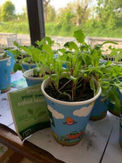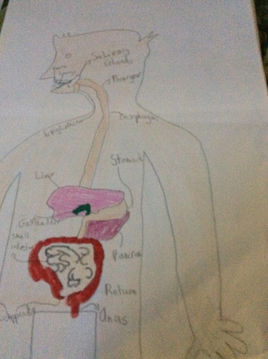
Primary Maths & Science
Collection 1
We have many other older experiments to share with you from our Science programme in 2016-2017 still on our blog - please visit and see the work of our super scientists and mathematicans. - click here
Science - Living Things
Seashore Safari
Mrs Hughes' Class
On Wednesday we presented our projects on Irish Marine Biodiversity via Zoom to Sorsha, of Leave No Trace Ireland.
Sorsha emailed to tell us that she ,” was amazed at the amount of work the class carried out and how much the children had learned about their individual species. It was great to see the variety of both flora and fauna, the art work was very impressive and I love that they included biofacts in some (mermaids purse, razor clam shells, mussel and limpet shells, barnacles and sea potato).
” We will receive our Marine Explorers Certificate shortly. On Thursday the 10th June we walked to the shore and we had a wonderful day investigating in the rock pools. We were able to put all we had learned to use.
We have some amazing pictures. We remembered “The leave no Trace rules” and returned all creatures to where we found them.
The Leave No Trace Seven Principles
-
Plan ahead and prepare.
-
Travel and camp on durable surfaces.
-
Dispose of waste properly.
-
Leave what you find.
-
Minimize campfire impacts (be careful with fire).
-
Respect wildlife.
-
Be considerate of other visitors.
Science - Living Things
Growing Vegetables
Our vegetables are growing really well. It is time for us to thin them out and replant them in bigger pots. We received all of the seeds and compost from ‘THE BIG GROW’, except for the pumpkin seeds which we ho.pe to harvest in time for Hallowe’en
We know that even a small food growing experience can have a BIG impact. And that’s what the innocent big grow does. It has a big impact on children by teaching them something we call Food Empathy.
Food Empathy is a deeper connection and understanding of food that comes through the power of food growing. Food Growers eat more locally and more seasonally. They eat more portions of fruit and vegetables every day and are more physically active. Food growing also does wonders for self-esteem and confidence.
Strand: Living things,
Strand Unit: Human Life, The Digestive System
Mathematical Facts About The Digestive System
-
The stomach’s wall is lined with three layers of powerful muscles.
-
An adults’ stomach can hold approximately 1.5 litres of material.
-
The liver performs more than 500 functions such as processing digested food
-
from the intestine, controlling levels of fats, amino acids and glucose in the blood,
-
The food you eat stays in your stomach for 2 to 3 hours.
-
After you eat, it takes usually between 24 and 72 hours in healthy adults to completely digest the food.
-
We make 1/2 to 1 1/2 litres of saliva a day.
-
The small intestine has a diameter of 4cm. and it is approximately 5 metres in length.
-
The large intestine has a diameter of 6 cm. and approximately 1.5 metres in length.
.jpg)








What are Tangrams?
What are tangrams?
A tangram is a Chinese puzzle consisting of 7 shapes.
-
Two large right triangles
-
One medium sized right triangle
-
Two small right triangles
-
One small square
-
One parallelogram
The 7 shapes can be fitted together as a large square, rectangle, or triangle. The children manipulated the plastic sets of tangrams. Then they made their own tangrams from paper and finally they arranged the tangrams in a variety of of ways and created animals, people etc.
Tangrams help to develop spatial awareness. When playing with tangrams children:-
classify shapes, develop positive feelings about geometry, gain a stronger grasp of spatial relationships,
acquire a precise vocabulary for manipulating shapes (e.g., “flip,” “rotate”),
learn the meaning of “congruent”
Spatial thinking is what we do when we visualize shapes in our “mind’s eye.” It’s the mental feat that architects and engineers perform when they design buildings. It’s what Michelangelo used when he visualised a future sculpture trapped inside a lump of stone.
Magnetic Boats
The challenge was to make a boat from recyclable materials which had to float when pulled by the force of the magnet.
Did you know? The biggest magnet on earth is the earth itself. It’s core is made out of iron and hot nickel and so it attracts everything towards itself. Therefore, we have the laws of gravity.













We have been investigating how materials dissolve in cold water and warm water. We used equal amounts of water and stirred each mixture twice. We learned that the amount of stirs helped the dissolving process.
We are doing projects using the Scratch Junior App on the iPads. Scratch is an excellent tool to use to help develop STEM (science, technology, engineering and maths) skills.
We used our ipads today to reinforce the maths concepts that we are learning at school





.png)

_edited.png)

.png)

































































